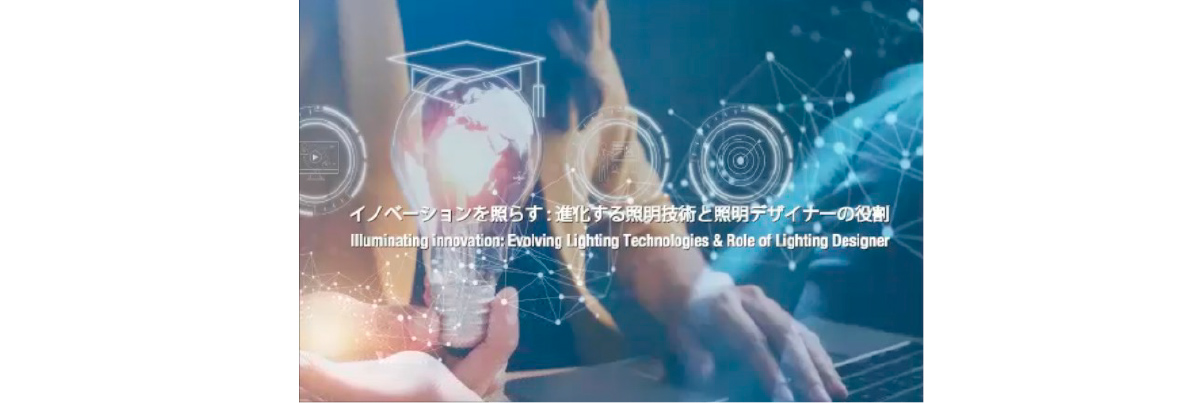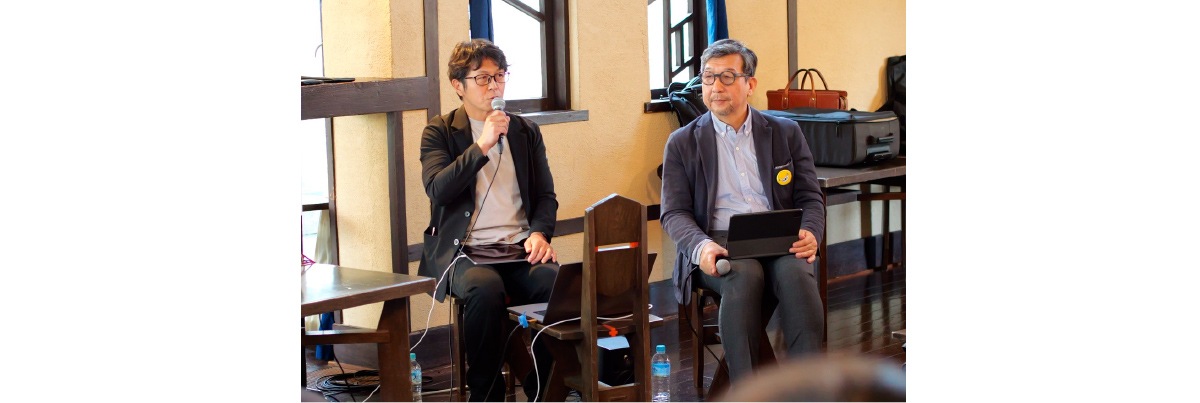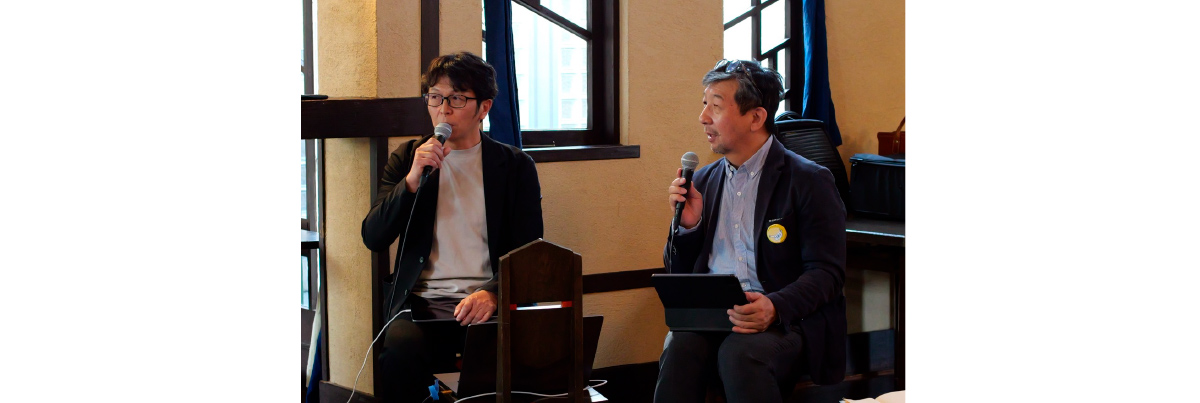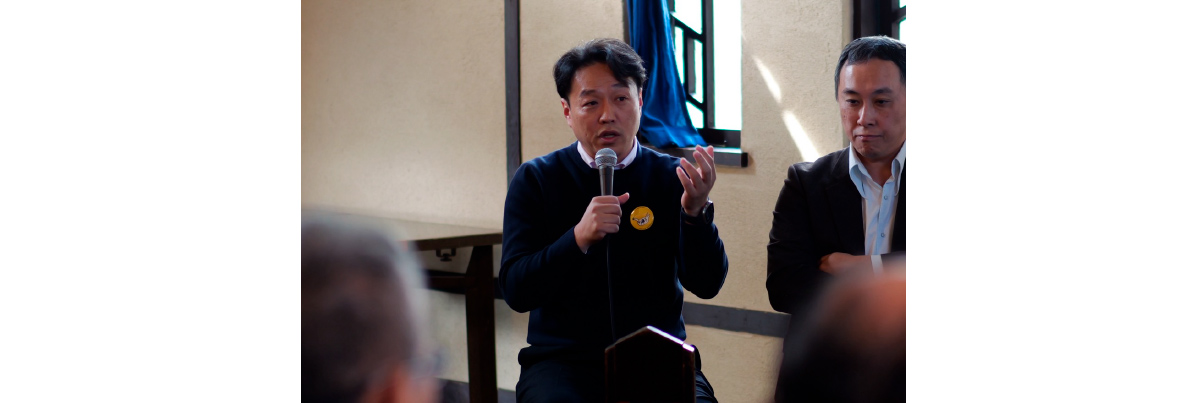Technology
【S-5】Illuminating innovation: Evolving Lighting Technologies & Role of Lighting Designers
In recent years, the design scope of lighting consultants has expanded, and various technical supports have come to play a major role. Major changes have been occurring in lighting design, including the fusion of design and engineering. In this seminar, we welcome guests from lighting and lighting control systems manufacturers and the hotel industry, to have them discuss topics such as the impact of LEDs and changes in the role of lighting designers from their perspectives.

The seminar starts with greetings and an overview of the agenda by two moderators. “As we review the theme of this seminar, ‘Illuminating Innovation: Evolving Lighting Technologies & Role of Lighting Designers,’ I hope to have a discussion that can be appreciated from the perspectives of business managers and hotel operators,” says Atsushi Kaneda in his opening remarks. Koichi Tanaka says there are three items on the agenda for the seminar: “Impact of LEDs on the lighting industry”, “Transition of the hotel industry with the latest technology’”, and “New Lighting Control.”

First, regarding the first item on the agenda, “Impact of LEDs on the lighting industry,” Kaneda asks Daisuke Masuzawa about the transition to LEDs seen from the perspective of European lighting manufacturers. “Since the year 2000, energy conservation has been a priority in Europe, and its incorporation into law has given it a lot of momentum. In that respect, there was a lot of pressure on specific industries to save energy, and that became the main engine for promoting the transition to LEDs,” Masuzawa responded.

Similarly, regarding the trend toward LEDs from the perspective of American lighting manufacturers, Munetaka Tanizaki believes that “Government-led efforts to discontinue the sales of incandescent lamps, which began around 2010, phased out the sales of these lamps and propelled the rapid transition to LEDs.” Accordingly, around 2010, his company started selling dimmers and control systems for LEDs. Meanwhile, from the perspective of clients, Chai Yee Jet remembers that around 2013, he was instructed to adopt LEDs for all lighting in the buildings. “One of the main reasons for this is the energy-saving effects of LEDs. From a hotel operator’s perspective, this was extremely important,” he says.

“In Japan, the Great East Japan Earthquake occurred in 2011, and from around the following year there was a public sentiment that ‘using electricity was a sin.’ Then, the value of the LED market in Japan, which used to be around 700 to 800 billion yen, suddenly exceeded one trillion yen. I think that’s around the time when the fifth hotel construction boom began in Japan,” says Kaneda, stating his impressions of the time.
Then, the seminar moves on to a discussion with Jet about the second item on the agenda, “Transition of the hotel industry with the latest technology.” “Hotels have changed a lot in the last ten years. Now, ‘experience’ is the factor people choose a hotel. They want to have a special experience. Therefore, hotels are designing with an emphasis on experience in which lighting plays an important role,” says Jet. He also gives some advice to lighting designers from an operator’s perspective: “When designers are designing and proposing, it would be better to truly think about how the guests will feel and what purpose they will have when they visit a hotel.”

When asked for his opinion on the emerging demand for “experience,” Tanaka said that there are two crucial factors in hotel design: guests’ experience and operations. Unless we create a lighting design for the space from the perspective of the people who will be operating it, things will not go well. He says that by designing a space that takes into account various circulation paths and usages, we can create a space that is better overall. He also says that over the past ten years, he has witnessed the expansion of the profession, role, and design scope of the lighting designer as he has worked on a variety of projects.

For the third item on the agenda, “New Lighting Control,” Masuzawa and Tanizaki have a discussion using an actual device. Masuzawa demonstrates a wireless spotlight controlled via Bluetooth, explaining that “It uses a 48-volt DC power supply, and the main device itself supports Bluetooth control. It has no switch and is operated by a smartphone app that mutually communicates with each other. Since there is no need for new signal wiring as long as there is existing wiring, this can be an instance where conversion to LEDs is made easy.”

When asked for his opinion on the dimming protocols, Tanizaki explains the difference between Japan, Europe and the United States, saying “There are two types of dimming control methods: conventional and wireless. In Japan, fixture manufacturers take the lead, and controls are designed with fixtures as one set. However, in Europe and the United States, there are control manufacturers who conceive controls separately from fixtures.” In Europe, a standard called D4i was created to promote wireless DALI, and Tanizaki’s company has also developed a wireless chip that is compatible with D4i. He explains that wireless communication can be achieved by connecting to a DALI driver that supports D4i.
Chai Yee Jet, who has been listening to the discussion so far, says, “I am very excited to see the possibility of personalization added to the scenes preset by the hotel where the system is connected via Bluetooth or wirelessly.” He hopes this will also encourage a transition toward smart hotels.

At the end of the discussion, Kaneda concluded, “As lighting design continues to evolve, and the market and usage change, lighting designers have a role in expanding their market by steadily broadening their scope and designing lighting with that in mind.”


